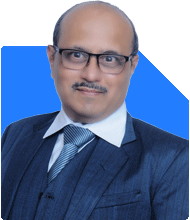Ramalingam Kalirajan |10893 Answers |Ask -Follow
Mutual Funds, Financial Planning Expert - Answered on May 12, 2024
He has an MBA in finance from the University of Madras and is a certified financial planner.
He is the director and chief financial planner at Holistic Investment, a Chennai-based firm that offers financial planning and wealth management advice.... more

Sir. This is Ravi kumar. My 1.5 lack FD will be closed in the next. Instead of FD where i can invest without risk with no locking period. Please suggest. Thank you
Liquid Mutual Funds: Liquid mutual funds invest in short-term money market instruments, offering stability and easy liquidity. They typically provide slightly higher returns compared to FDs while maintaining low risk. You can redeem your investment anytime without any penalty.
Savings Account with High Interest: Some banks offer savings accounts with higher interest rates compared to traditional savings accounts. Look for banks offering attractive interest rates and features like no minimum balance requirement and unlimited withdrawals.
Short-term Debt Mutual Funds: Short-term debt mutual funds invest in fixed income securities with shorter maturities, providing stability and moderate returns. These funds offer flexibility with no lock-in period and allow you to redeem your investment at any time.
Flexi Deposit or Sweep-in Accounts: Some banks offer flexi deposit or sweep-in accounts where you can link your savings account with a fixed deposit. Any excess funds above a specified threshold in your savings account automatically get transferred to a fixed deposit, earning higher interest. This option offers liquidity while maximizing returns.
Ultra Short Duration Mutual Funds: Ultra short duration mutual funds invest in fixed income securities with short to medium-term durations, offering slightly higher returns compared to liquid funds. These funds maintain low interest rate risk and provide liquidity with no exit load.
Before making any investment decision, assess your risk tolerance, investment horizon, and liquidity needs. It's crucial to diversify your investments across different asset classes for better risk management.
Consider consulting with a Certified Financial Planner who can evaluate your financial situation and goals and recommend suitable investment options tailored to your needs.
Best Regards,
K. Ramalingam, MBA, CFP,
Chief Financial Planner,
www.holisticinvestment.in
You may like to see similar questions and answers below
Sanjeev Govila | Answer |Ask -Follow
Financial Planner - Answered on Mar 01, 2023
Nikunj Saraf | Answer |Ask -Follow
Mutual Funds Expert - Answered on Jul 04, 2023
Ramalingam Kalirajan |10893 Answers |Ask -Follow
Mutual Funds, Financial Planning Expert - Answered on Jun 03, 2024
Ramalingam Kalirajan |10893 Answers |Ask -Follow
Mutual Funds, Financial Planning Expert - Answered on Oct 21, 2024
Nitin Narkhede |113 Answers |Ask -Follow
MF, PF Expert - Answered on Dec 15, 2025
Nitin Narkhede |113 Answers |Ask -Follow
MF, PF Expert - Answered on Dec 15, 2025
Ramalingam Kalirajan |10893 Answers |Ask -Follow
Mutual Funds, Financial Planning Expert - Answered on Dec 15, 2025
Ramalingam Kalirajan |10893 Answers |Ask -Follow
Mutual Funds, Financial Planning Expert - Answered on Dec 15, 2025
Radheshyam Zanwar |6746 Answers |Ask -Follow
MHT-CET, IIT-JEE, NEET-UG Expert - Answered on Dec 15, 2025
Ramalingam Kalirajan |10893 Answers |Ask -Follow
Mutual Funds, Financial Planning Expert - Answered on Dec 15, 2025
Ramalingam Kalirajan |10893 Answers |Ask -Follow
Mutual Funds, Financial Planning Expert - Answered on Dec 15, 2025
Ramalingam Kalirajan |10893 Answers |Ask -Follow
Mutual Funds, Financial Planning Expert - Answered on Dec 15, 2025
Samraat Jadhav |2508 Answers |Ask -Follow
Stock Market Expert - Answered on Dec 15, 2025
Ramalingam Kalirajan |10893 Answers |Ask -Follow
Mutual Funds, Financial Planning Expert - Answered on Dec 15, 2025


























